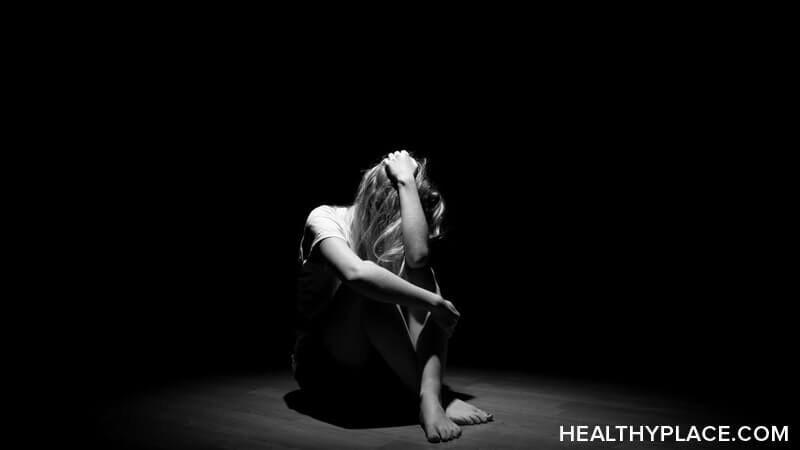Bipolar II Disorder Symptoms and How to Treat Them

Bipolar II disorder symptoms are different from the symptoms of bipolar I. Most people assume that having bipolar disorder means episodes of mania followed by depression, but this isn't the case with bipolar II. Bipolar II disorder is marked by major depressive episodes that last for two weeks or more in addition to at least one hypomanic episode. Understanding the symptoms of bipolar II disorder is a crucial step toward accessing the right help and treatment, so it's important to be aware of the facts.
Bipolar II Disorder Symptoms: How Are They Different?
Bipolar II disorder symptoms are more varied than the symptoms of bipolar I. In-between episodes, many people with bipolar II disorder live normal and functional lives.
The main difference between bipolar I and bipolar II is that people with bipolar II don’t experience full-blown mania. Instead, their “up” periods manifest as hypomania – a milder form of mania that presents as either euphoria or irritability.
Common symptoms of hypomania include:
- Being unusually talkative and loud
- Hyperproductivity
- "Flying" from one idea to the next
- Exaggerated self-confidence
- Increased energy
- Decreased need for sleep
However, people experiencing hypomanic episodes may not experience all of these symptoms, and they are often extremely pleasant to be around. Hypomania can, however, lead to erratic and impulsive decision-making, including compulsive spending, promiscuity and other unhealthy behavior. What’s more, untreated hypomania can trigger full-blown mania, which has potentially dangerous consequences.
In bipolar II, depression can be just as severe as in bipolar I. The ratio of time spent in depression versus mania for those with bipolar II is 40:1. Not only are depressive episodes more frequent than hypomanic ones, but they also last longer. For this reason, depression is often considered the most debilitating part of this illness.
How to Treat Bipolar II Disorder Symptoms
Bipolar II disorder symptoms aren’t curable, but they can be treated. The difficulty lies in diagnosing bipolar II in the first place, as it is often misdiagnosed as regular depression. This is mainly because hypomanic episodes don’t draw much attention unless they’re causing unhealthy behavior.
If you are diagnosed with bipolar II disorder, your doctor may prescribe you medications to help stabilize your moods. These medications can help treat symptoms of depression while also limiting the negative effects of hypomania.
Mood stabilizers
Mood stabilizers, such as lithium, have been used for over 60 years to treat bipolar disorder. They are most effective when taken long-term, rather than in the treatment of an acute episode. Anti-seizure drugs like carbamazepine (Tegretol) can also be used to treat bipolar depression and prevent future episodes. Lamotrigine is especially helpful at preventing lows but can also help delay hypomanic episodes.
Antipsychotics and Antidepressants
Seroquel and Seroquel XR, which are antipsychotics, are the only FDA-approved medications specifically for the treatment of bipolar II depression. Latuda, another antipsychotic medication, is also approved for bipolar depression.
Antidepressants are often prescribed alongside mood stabilizers to help patients prevent and manage episodes of depression. They are sometimes used in bipolar II depression. Other medications used to treat bipolar II may include other antipsychotics and benzodiazepines.
Therapy
Therapy alongside medication, specifically psychotherapy and cognitive-behavioral therapy (CBT), are often used to treat the emotional symptoms of bipolar II disorder.
Although bipolar II disorder symptoms cannot be cured, there are plenty of treatment options available – whether for help with specific episodes or on an ongoing basis. If you’re experiencing symptoms of bipolar II, such as hypomanic and major depressive episodes, it’s important to talk to your doctor. They will run tests to rule out other causes and refer you for a psychiatric assessment. Once it is diagnosed and treated, there is no reason why you cannot live a fulfilling and stable life with bipolar II disorder.
APA Reference
Smith, E.
(2021, December 28). Bipolar II Disorder Symptoms and How to Treat Them, HealthyPlace. Retrieved
on 2025, November 25 from https://www.healthyplace.com/bipolar-disorder/bipolar-symptoms/bipolar-ii-disorder-symptoms-and-how-to-treat-them



